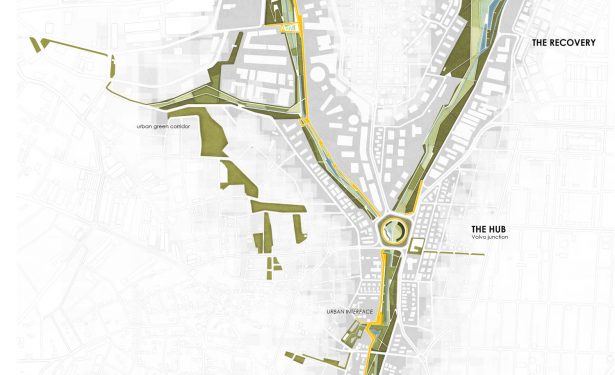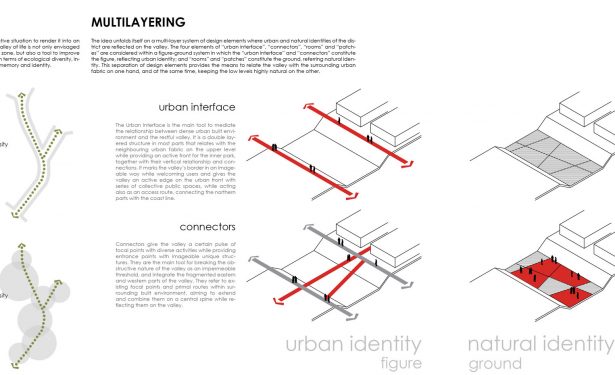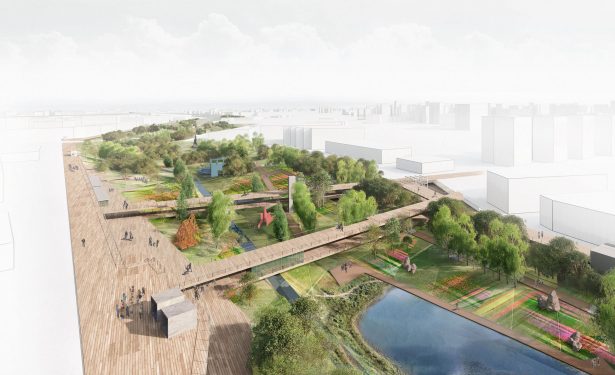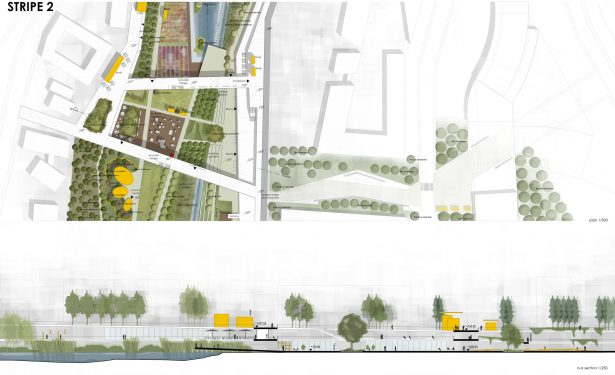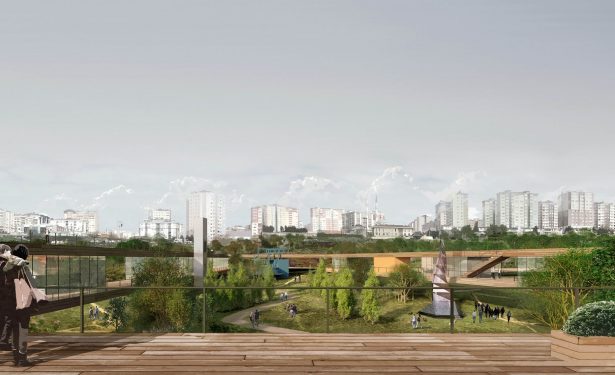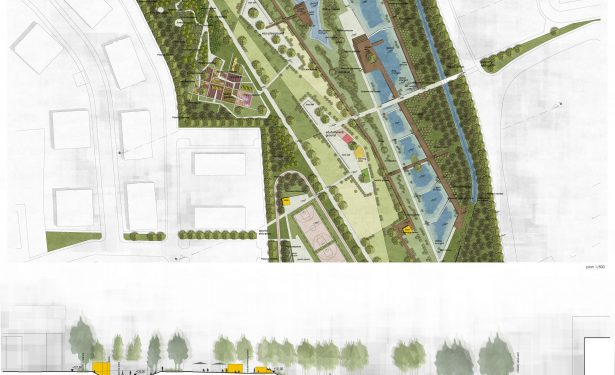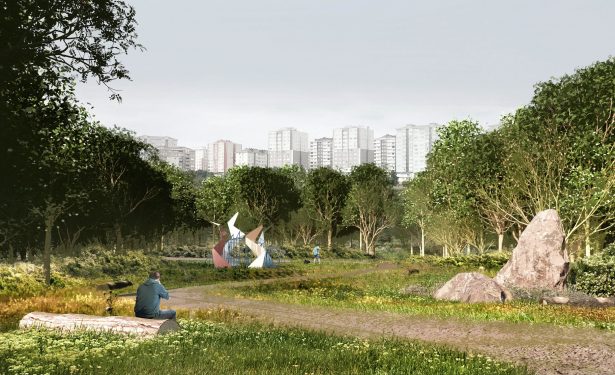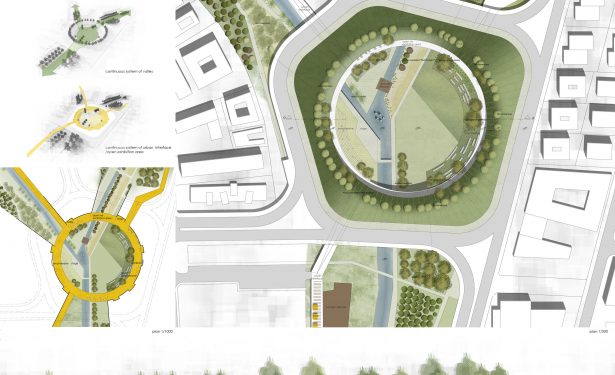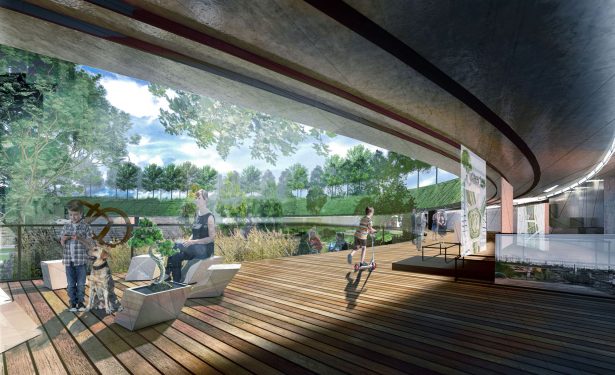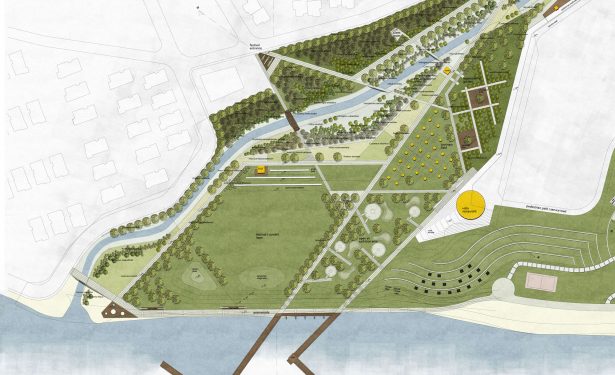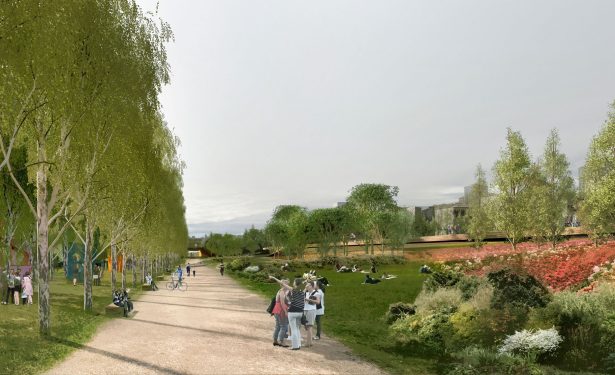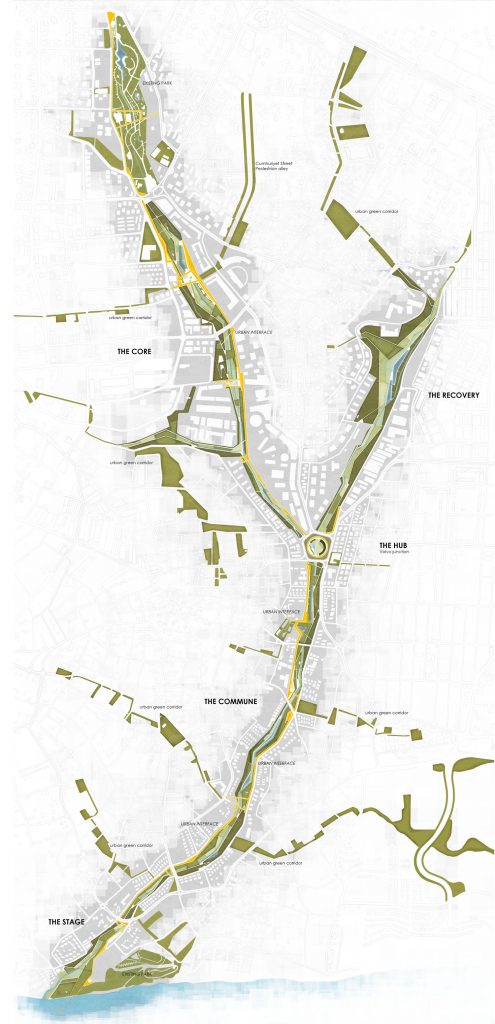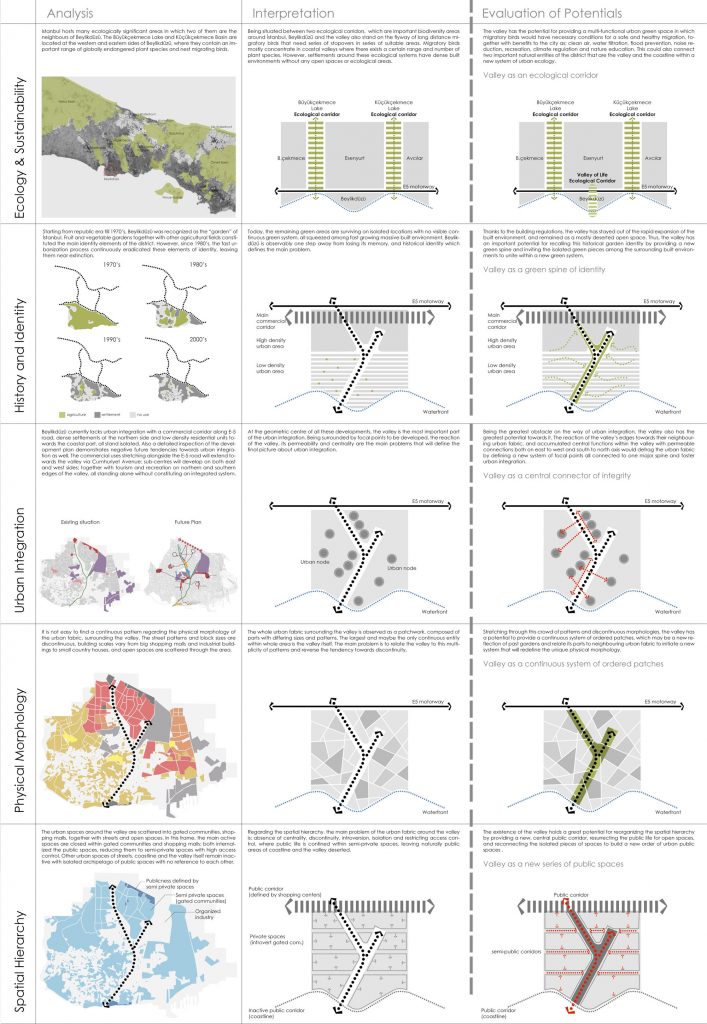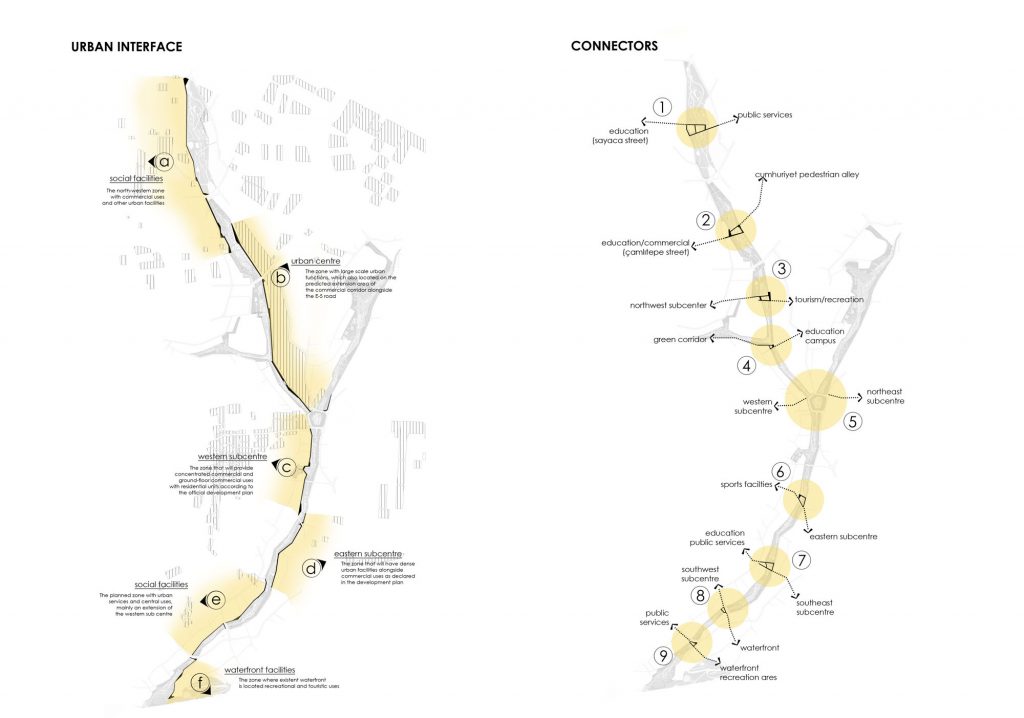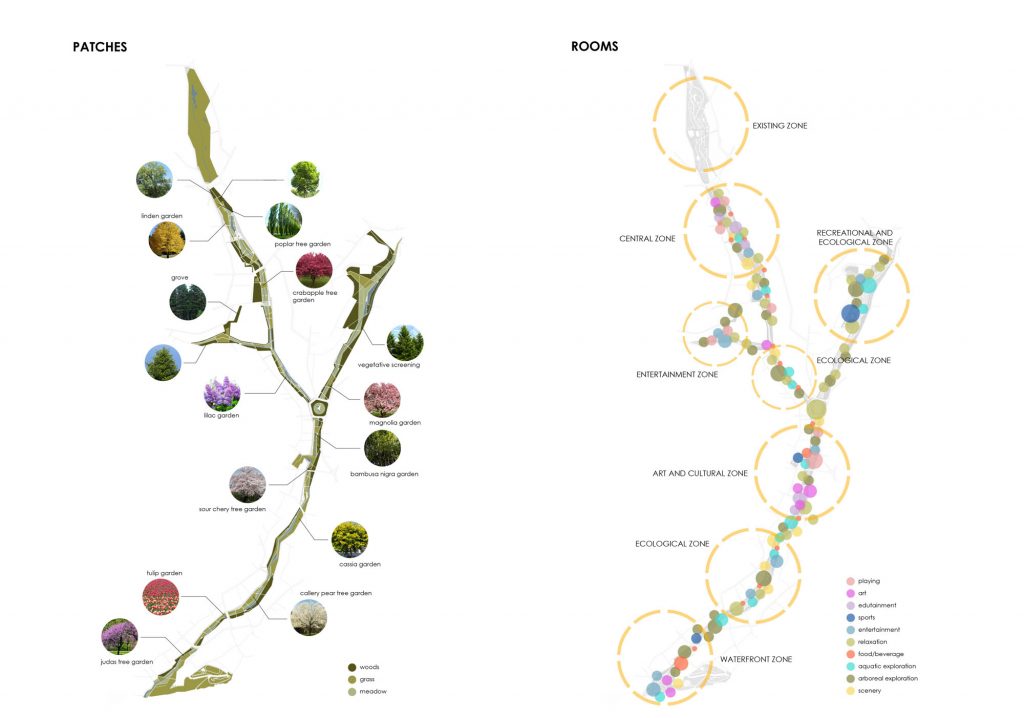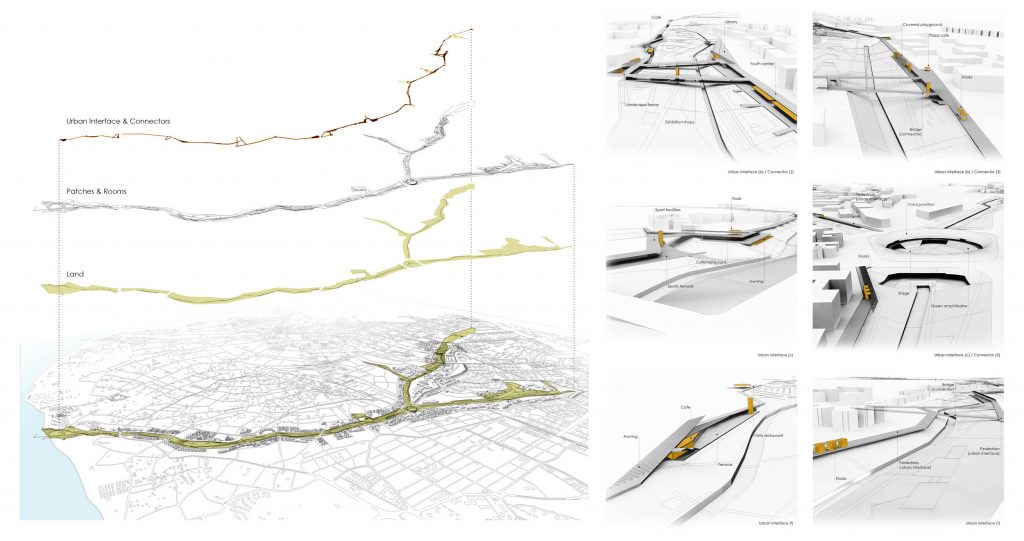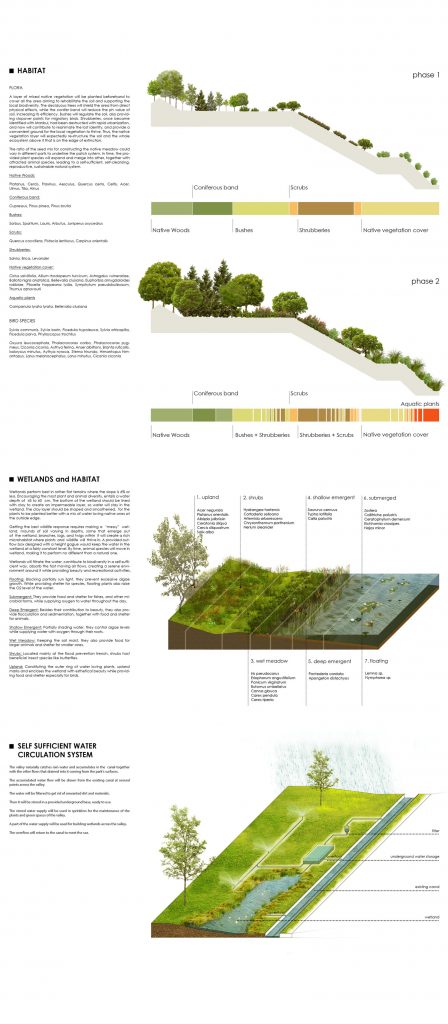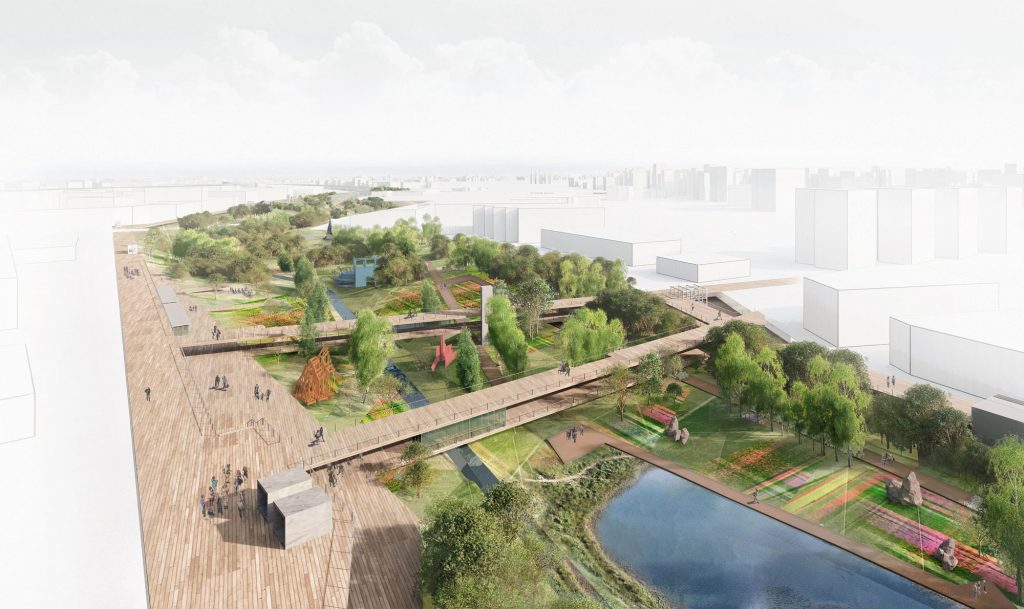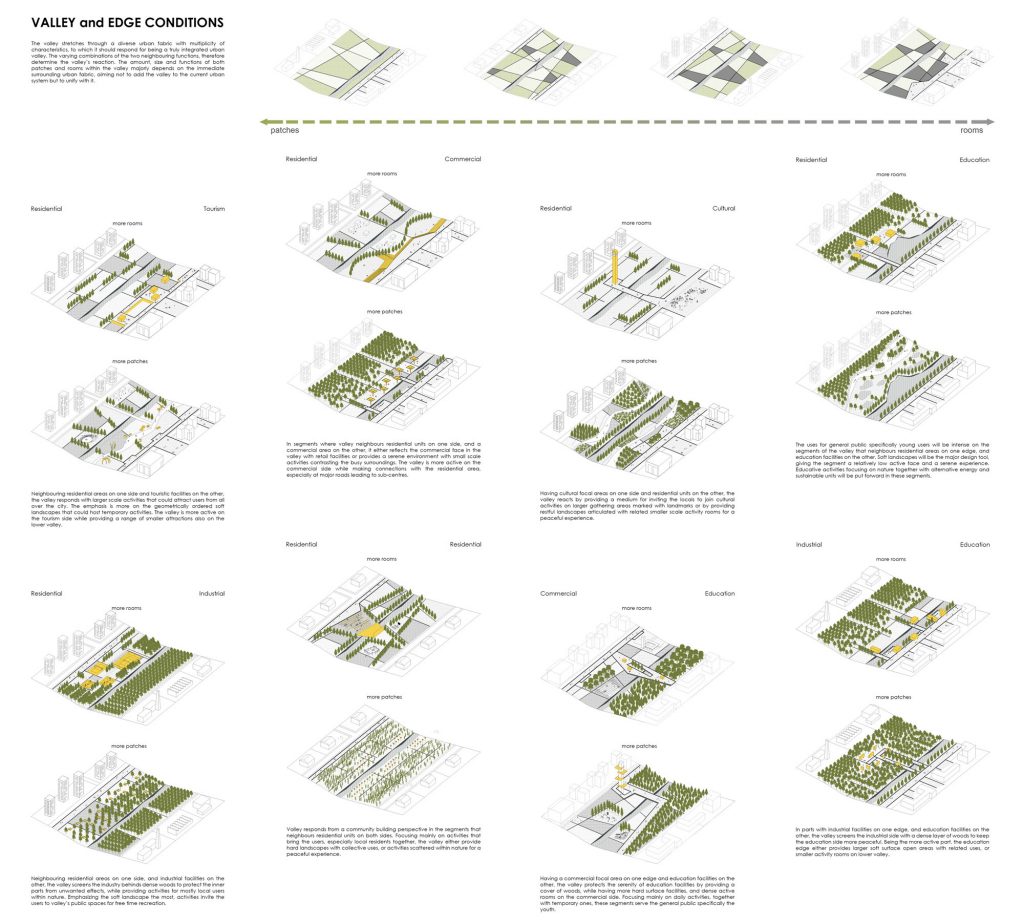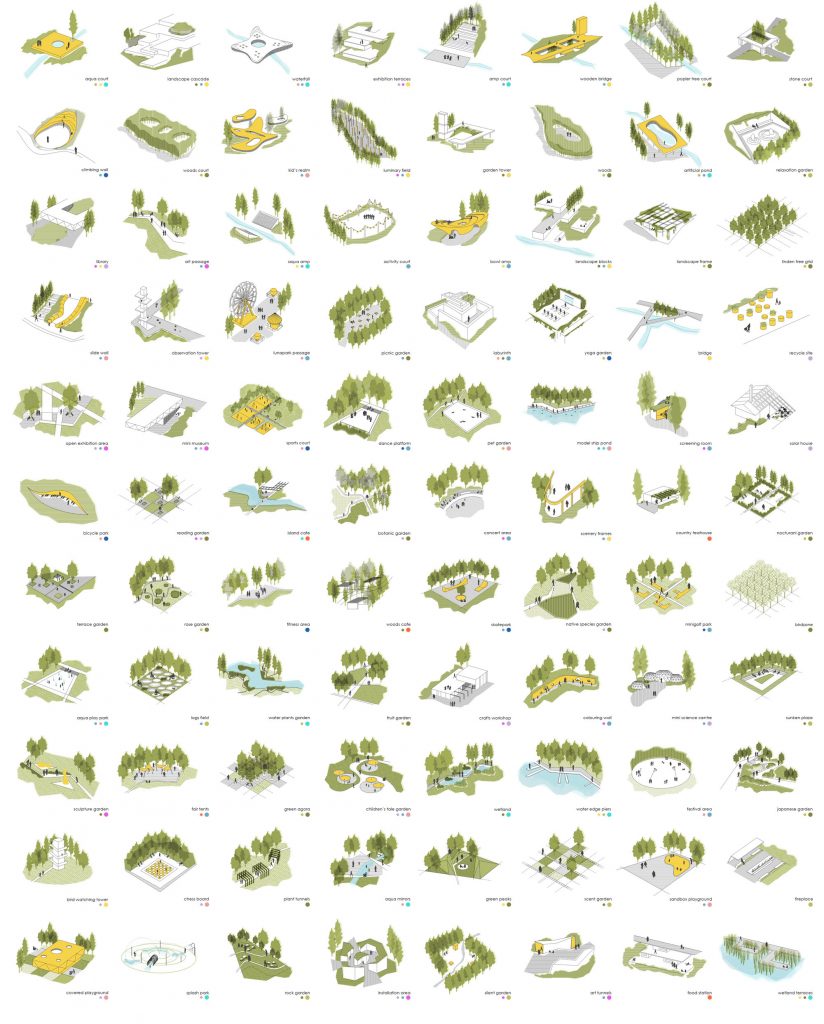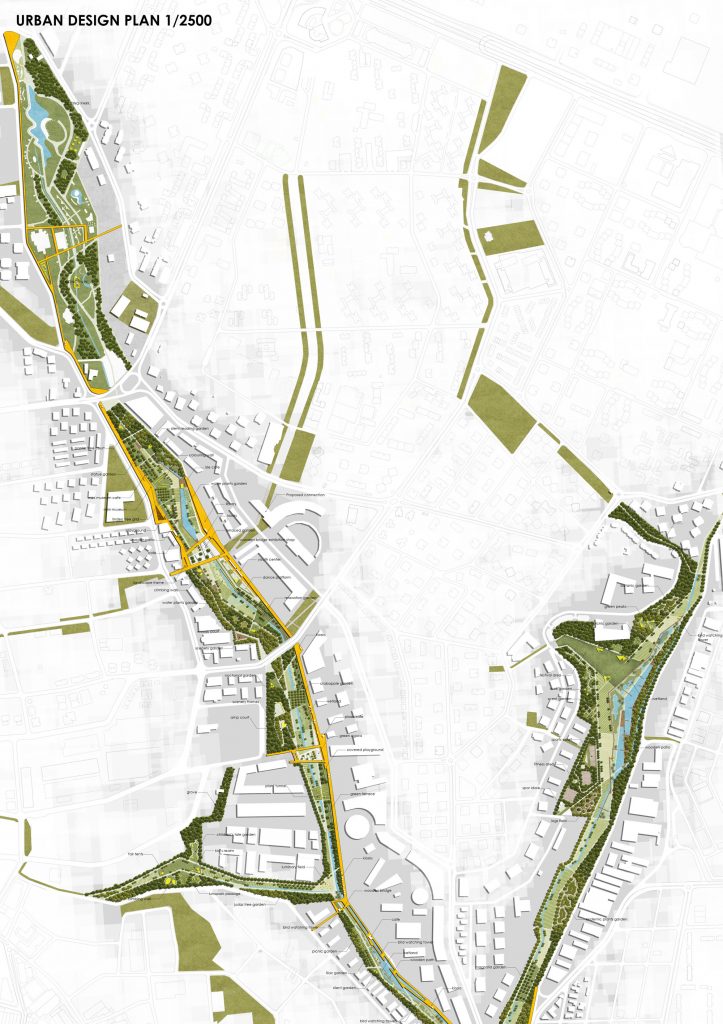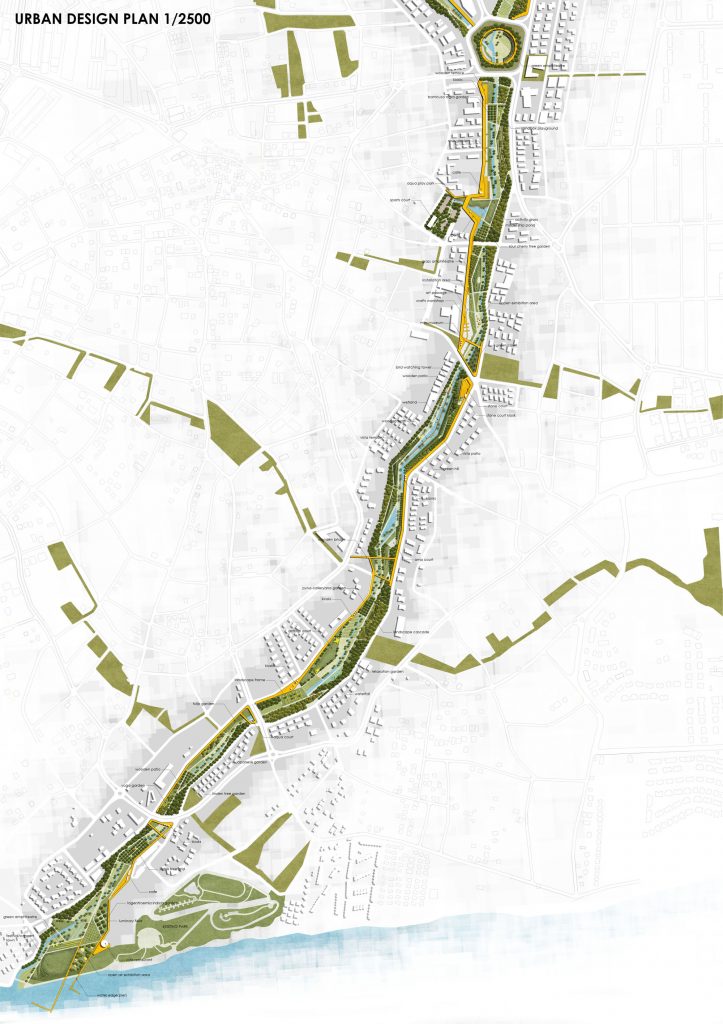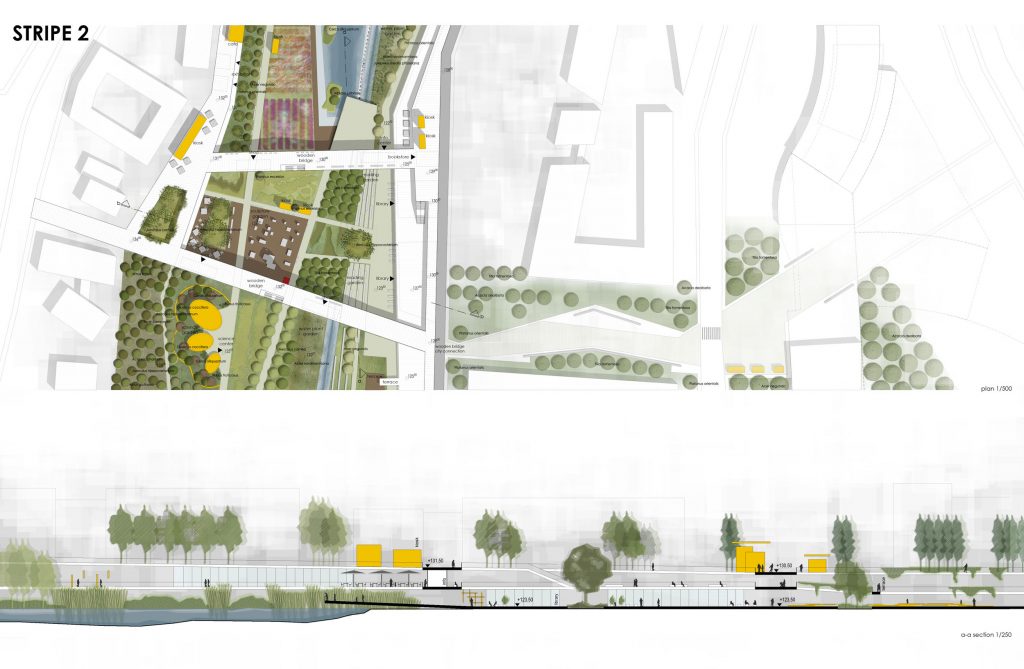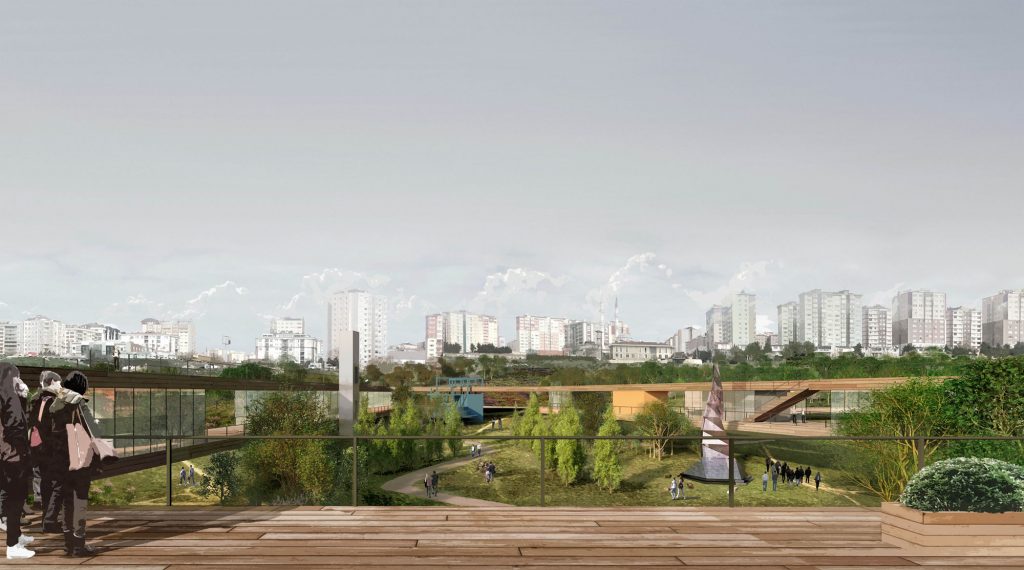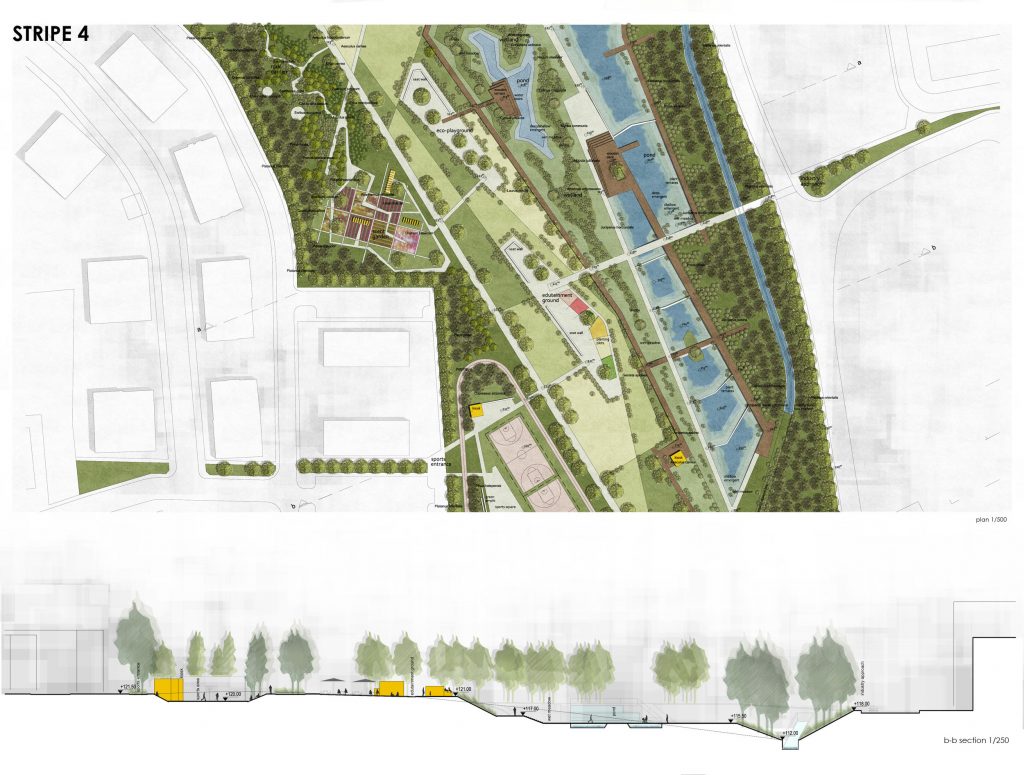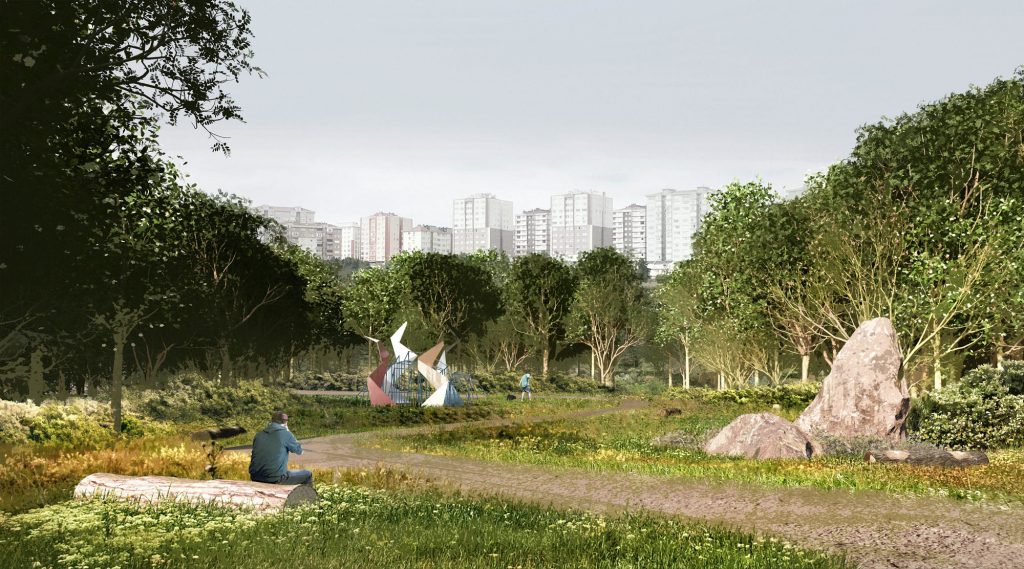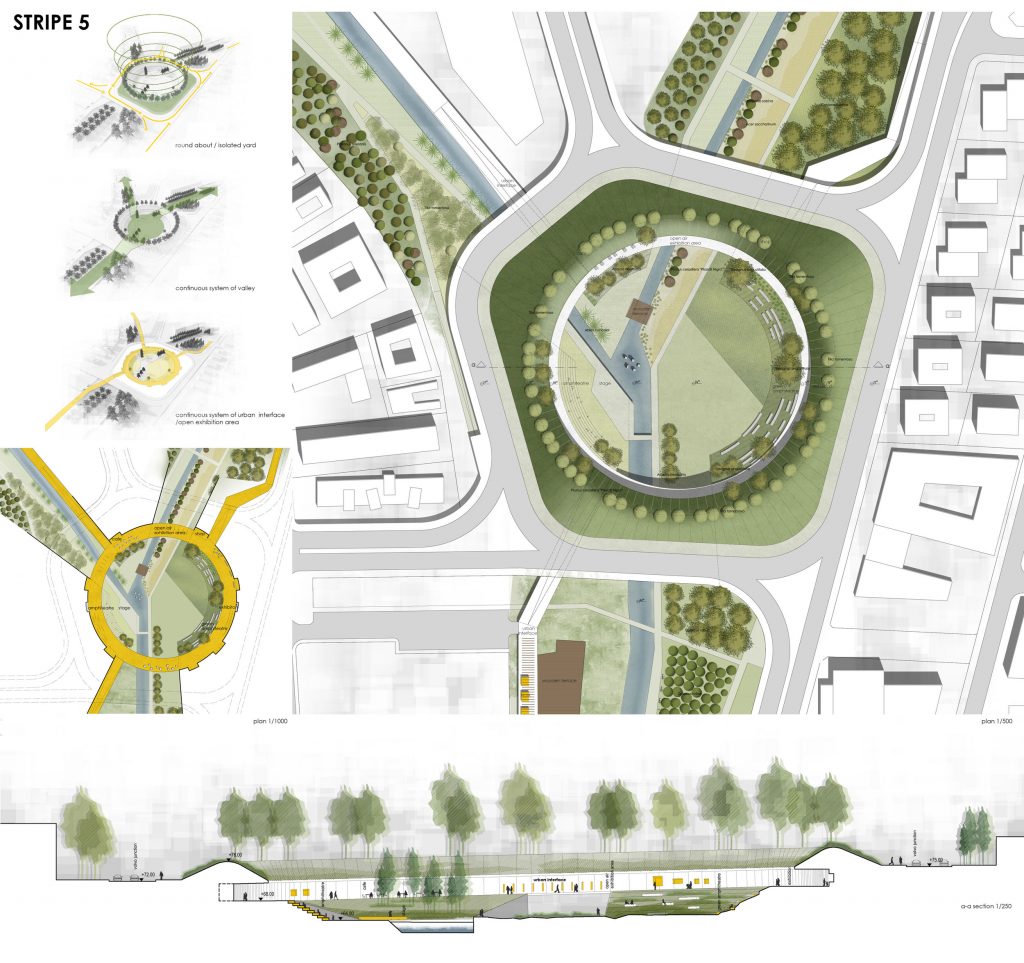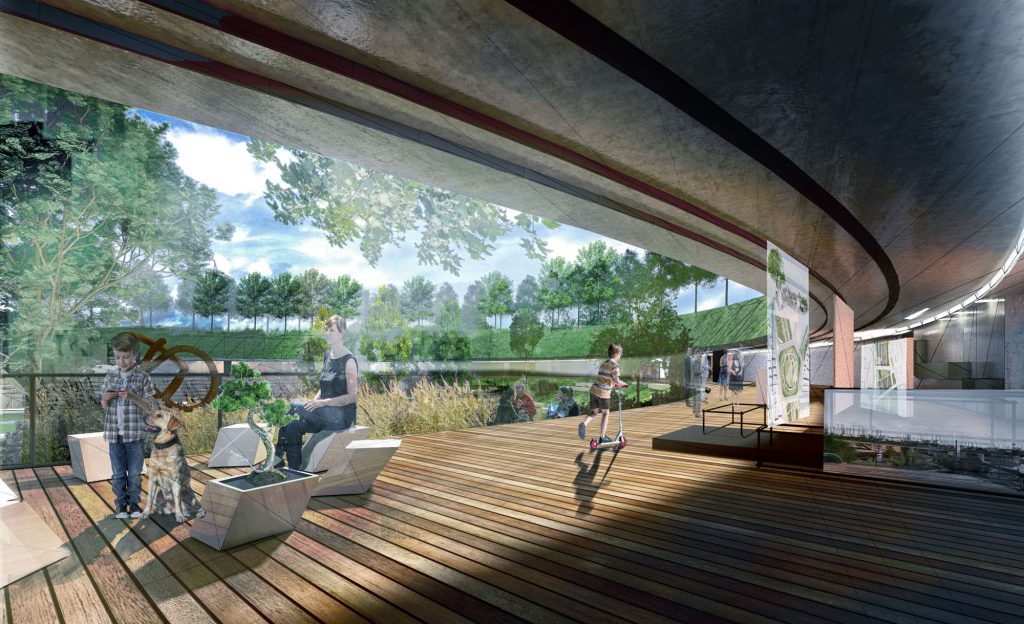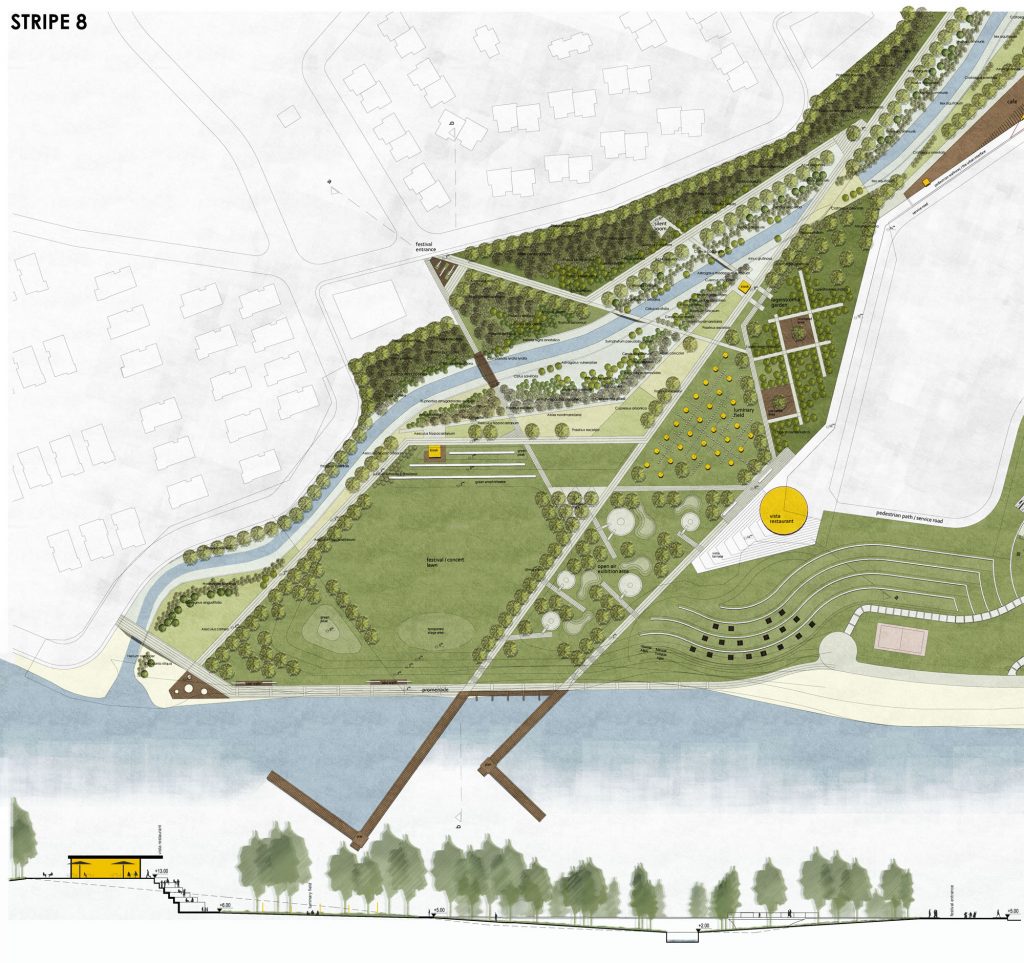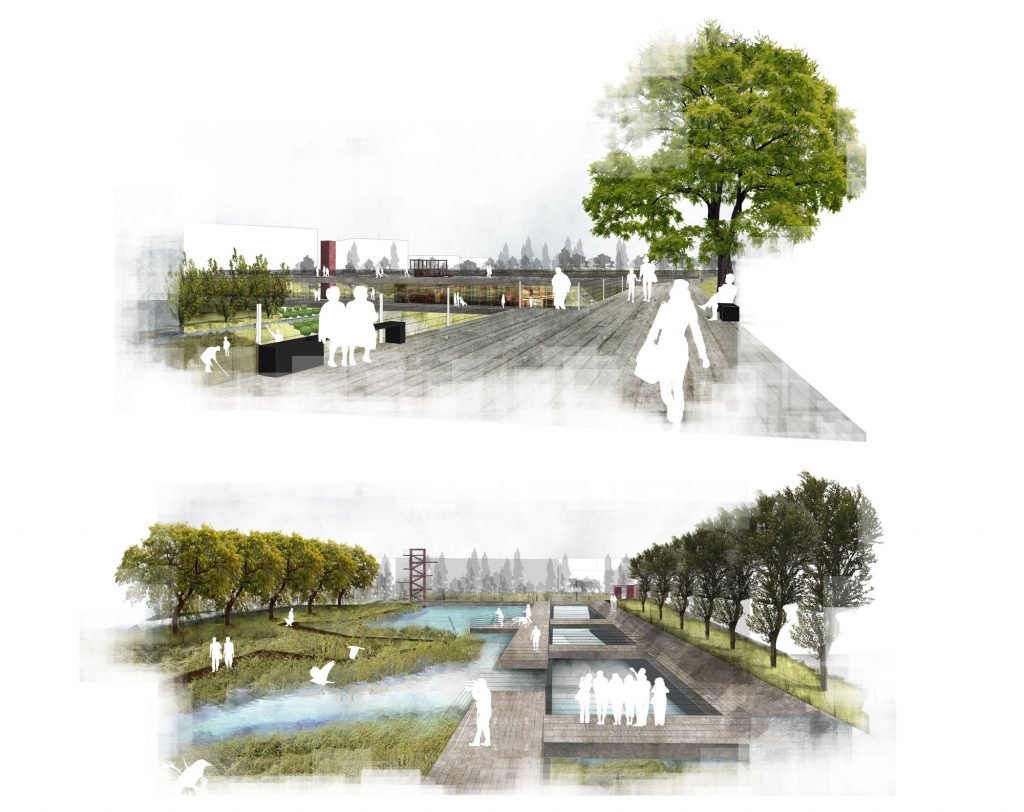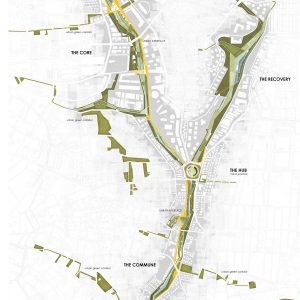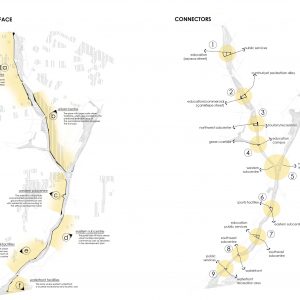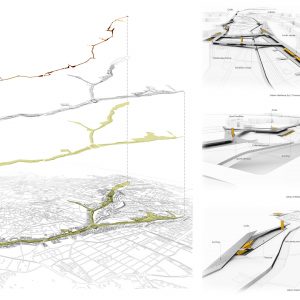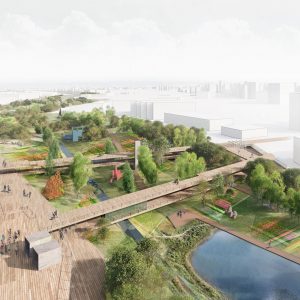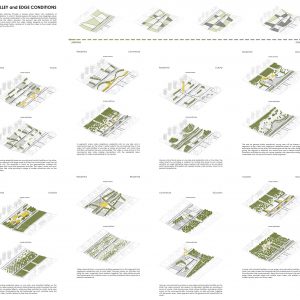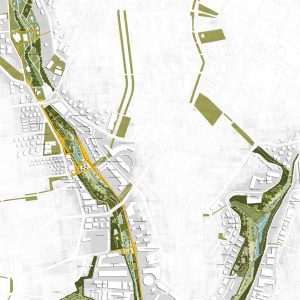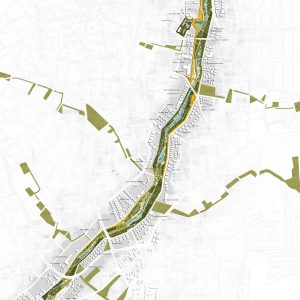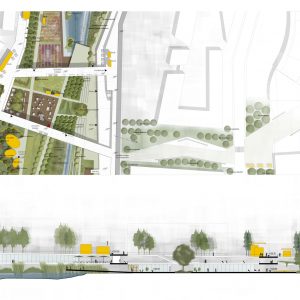- 8 Haziran 2016
- 45418 defa okundu.
1. Ödül, Beylikdüzü Belediyesi Yaşam Vadisi Uluslararası Fikir Yarışması
PROJE RAPORU
1. Introduction
Beylikdüzü in Planning Practice
The planning dynamics of Turkey, together with branding strategies, lead to a transformation of urban spaces in big cities especially in the last 10 years. In this frame, flagship projects of gated communities and shopping malls have been used increasingly, in the name of branding the city or its parts. The tendency of introducing a new image in each project and reflecting it on the space, instead of emphasizing the distinctive existing character of the place leads the city to develop in fragments. This method also ignores the unique nature of the place accumulated through time to compose a meaningful whole. In the end, the struggle towards defining a new image and identity in each project rather generates a collage of similar urban places lacking identity.
Throughout its history, Beylikdüzü had been an area remembered for its agricultural production ornamented with gardens. Since the second half of the 1990s, Beylikdüzü became an important sub-centre in the city of Istanbul, and rapid urbanization transformed its spaces. The central corridor of shopping malls at the northern part of the district alongside the E-5 road has emerged as a result of this process, accompanied by high rise residential units in the neighbouring southern section. The establishment of the organized industrial zone in 2002 has increased the development pace of the district even more, which reflected on the space as gated communities. This tendency stamped the public spaces out and rendered the district towards producing a built environment as just a collage of semi-private spaces. It also led to the loss of gardens and other open spaces that emphasize the districts historic identity which substituted by private uses, especially new residential units. So, this course of losing the natural components of historic identity on one hand, and losing public spaces, social life and concept of integrity with new projects on the other constitutes the major problem of the district.
The valley of life competition area has an important potential to tackle the above mentioned problems, for recalling the district’s urban and natural identity. In this sense, the project approaches the lower valley as the main element of design to reveal the valley’s natural and ecological assets as the natural identity, while the upper valley neighbouring urban fabric with active public corridors and linkages as the urban identity to integrate and revive the built environment. So, overlaying these design elements throughout the valley would contribute to the district’s natural and urban identity.
2. Analyses and Potentials
2.1. Spatial Hierarchy
The urban spaces around the valley are scattered into gated communities, shopping malls, together with streets and open spaces. In this frame, the main active spaces are closed with gated communities and shopping malls; both internalized the public spaces, reducing them to semi-private spaces with high access control. Other urban spaces of streets, coastline and the valley itself remain inactive with isolated archipelago of public spaces with no reference to each other.
Regarding the spatial hierarchy, the main problem of the urban fabric around the valley is; absence of centrality, discontinuity, introversion, isolation and restricting access control, where public life is confined within semi-private spaces, leaving naturally public areas of coastline and the valley deserted.
The existence of the valley holds a great potential for reorganizing the spatial hierarchy by providing a new, central public corridor, resurrecting the public life for open spaces, and reconnecting the isolated pieces of spaces to build a new order of urban public spaces .
2.2. Urban Integration
A detailed inspection of the development plan demonstrates negative tendencies towards urban integration. The commercial uses stretching alongside the E-5 road will extend towards the valley via Cumhuriyet Avenue; sub-centres will develop on both east and west sides; together with tourism and recreation on northern and southern edges of the valley, all standing alone without constituting an integrated system.
At the geometric centre of all these developments, the valley is the most important part of the urban integration. Being surrounded by focal point to be developed, the reaction of the valley, its permeability and centrality are the main problems that will define the final picture about urban integration.
Being the greatest obstacle on the way of urban integration, the valley also has the greatest potential towards it. The reaction of the valley’s edges towards their neighbouring urban fabric, and accumulated central functions within the valley with permeable connections both on east to west and south to north axis would defrag the urban fabric by defining a new system of focal points all connected to one major spine and foster urban integration.
2.3. Physical Morphology
It is not easy to find a continuous pattern regarding the physical morphology of the urban fabric, surrounding the valley. The street patterns and block sizes are discontinuous, building scales vary from big shopping malls and industrial buildings to small country houses, and open spaces are scattered through the area.
The whole urban fabric surrounding the valley is observed as a patchwork, composed of parts with differing sizes and patterns. The largest and maybe the only continuous entity within whole area is the valley itself. The main problem is to relate the valley to this multiplicity of pattern and reverse the tendency towards discontinuity.
Stretching through this crowd of patterns and discontinuous morphologies, the valley has a potential to provide a continuous system of ordered patches and relate its parts to neighbouring urban fabric to initiate a new system that will redefine the unique physical morphology.
2.4. History and Identity
Starting from republic era till 1970’s, Beylikdüzü was recognized as the “garden” of İstanbul. Fruit and vegetable gardens together with other agricultural fields constituted the main identity elements of the district. However, since 1980’s, the fast building process continuously eradicated these elements of identity, leaving them near extinction.
Today, the remaining green areas are surviving on isolated locations with no visible continuous green system, all squeezed among fast growing massive built environment. Beylikdüzü is observably one step away from losing its memory, and historical identity which defines the main problem.
Thanks to the building regulations, the valley has stayed out of the rapid expansion of the built environment, and remained as a mostly deserted open space. Thus, the valley has an important potential for recalling this historical identity by providing a new green spine and inviting the isolated green pieces among the surrounding built environments to unite within a new green system.
2.5. Ecology and Sustainability
Istanbul hosts many ecologically significant areas in which two of them are the neighbours of Beylikdüzü. The Büyükçekmece Lake and Küçükçekmece Basin are located at the western and eastern sides of Beylikdüzü, where they contain an important range of globally endangered plant species and nest migrating birds.
These birds mostly concentrate in coastal valleys where there exists a certain range and number of plant species. Beylikdüzü and the valley stand in the middle of these ecosystems and on the flyway of long distance migratory birds that need series of stopovers in series of suitable areas. However, settlements around these ecological systems have dense built environment with little open and ecological areas.
The valley has the potential for providing a multi-functional urban green space in which migratory birds would have necessary conditions for a safe and healthy migration, together with benefits to the city as; clean air, water filtration, flood prevention, noise reduction, recreation, climate regulation and nature education.
3. The Project
3.1. Main Idea
The main idea is to tackle valley’s current introverted, isolated and obstructive situation to render it into an important part of the urban system and life, by using all its potentials.
The valley of life is not only envisaged as a standalone project to introduce a green recreational green strip in an urban zone, but also a tool to improve the functioning of it at a broader scale. It aims to contribute to whole zone in terms of ecological diversity, integration, public spaces system and social life, while recalling its forgotten memory and identity.
3.2. Multilayering
The idea unfolds itself on a multi-layer system of design elements where urban and natural identities of the district are reflected on the valley. The four elements of “urban interface”, “connectors”, “rooms” and “patches” are considered within a figure-ground system in which the “urban interface” and “connectors” constitute the figure, reflecting urban identity; and “rooms” and “patches” constitute the ground, referring natural identity. This separation of design elements provides the means to relate the valley with the surrounding urban fabric on one hand, and at the same time, keeping the low levels highly natural on the other.
3.2.1. Urban Interface
The Urban Interface is the main tool to mediate the relationship between dense urban built environment and the restful valley. It is a double layered structure that relates with the neighbouring urban fabric on the upper level while providing an active front for the inner park, together with their vertical relationship and connections. It marks the valley’s border in an imaginable way while welcoming users and gives the valley an active edge on the urban front with series of collective public spaces, while acting also as an access route, connecting the northern parts with the coast line.
3.2.2. Connectors
Connectors give the valley a certain pulse of focal points with diverse activities while providing entrance points with imaginable unique structures. They are the main tool for breaking the obstructive nature of the valley as an impermeable threshold, and integrate the fragmented eastern and western parts of the valley. They refer to existing focal points and primal routes within surrounding built environment, aiming to extend and combine them on a central spine while reflecting them on the valley.
3.2.3. Rooms
Rooms constitute the active part of the patch system at lower level valley by offering series of diverse places and interest points. They supply a large number of activities, aiming a vivid experience for users while providing the necessary infrastructure for their needs and comfort within the valley. While holding all the structural and hard surface uses within lower valley, the rooms are also designed with themes that will attract large range of users with diverse interests and needs.
3.2.4. Patches
Patches are the soft surface natural pieces of the patch system at lower valley, celebrating the natural diversity and the beauty of the valley. They vary in their sizes and functions all designed within a larger green system. Some patches are assigned for accommodating migrating birds and nest diverse species of animals and plants, while some others are designed to attract the senses of users with their smell, colour, sound, touch and even taste. They control the pace and pulse of the valley, providing restful and serene experiences like a walk in the woods on one hand, and a vivid concert or a fair in a large lawn on the other.
3.3. Valley and Edge Conditions
The valley stretches through a diverse urban fabric with multiplicity of characteristics, to which it should respond for being a truly integrated urban valley. The varying combinations of the two neighbouring functions, therefore determine the valley’s reaction. The amount, size and functions of both patches and rooms within the valley majorly depend on the immediate surrounding urban fabric, aiming not to add the valley to the current urban system but to unify with it.
3.3.1. Residential – Tourism
Neighbouring residential areas on one side and touristic facilities on the other, the valley responds with larger scale activities that could attract users from all over the city. The emphasis is more on the geometrically ordered soft landscapes that could host temporary activities. The valley is more active on the tourism side while providing a range of smaller attractions also on the lower valley.
3.3.2. Residential – Commercial
In segments where valley neighbours residential units on one side, and a commercial area on the other, it either reflects the commercial face in the valley with retail facilities or provides a serene environment with small scale activities contrasting the busy surroundings. The valley is more active on the commercial side while making connections with the residential area, especially at major roads leading to sub-centres.
3.3.3. Residential – Cultural
In segments where valley neighbours residential units on one side, and a commercial area on the other, it either reflects the commercial face in the valley with retail facilities or provides a serene environment with small scale activities contrasting the busy surroundings. The valley is more active on the commercial side while making connections with the residential area, especially at major roads leading to sub-centres.
3.3.4. Residential – Education
The uses for general public specifically young users will be intense on the segments of the valley that neighbours residential areas on one edge, and education facilities on the other. Soft landscapes will be the major design tool, giving the segment a relatively low active face and a serene experience. Educative activities focusing on nature together with alternative energy and sustainable units will be put forward in these segments.
3.3.5. Residential – Industrial
Neighbouring residential areas on one side, and industrial facilities on the other, the valley screens the industry behinds dense woods to protect the inner parts from unwanted effects, while providing activities for mostly local users within nature. Emphasizing the soft landscape the most, activities invite the users to valley’s public spaces for free time recreation.
3.3.6. Residential – Residential
Valley responds from a community building perspective in the segments that neighbours residential units on both sides. Focusing mainly on activities that bring the users, especially local residents together, the valley either provide hard landscapes with collective uses, or activities scattered within nature for a peaceful experience.
3.3.7. Commercial – Education
Having a commercial focal area on one edge and education facilities on the other, the valley protects the serenity of education facilities by providing a cover of woods, while having more hard surface facilities, and dense active rooms on the commercial side. Focusing mainly on daily activities, together with temporary ones, these segments serve the general public specifically the youth.
3.3.8. Industrial – Education
In parts with industrial facilities on one edge, and education facilities on the other, the valley screens the industrial side with a dense layer of woods to keep the education side more peaceful. Being the more active part, the education edge either provides larger soft surface open areas with related uses, or smaller activity rooms on lower valley.
3.4. The Structure
The valley is divided into major sub-parts with differing attributes to create a effectively working valley system.
3.4.1. The Core
This part is at north western valley that is at the point where centre reaches it. The core would act as an extension of the centre reflected in the valley by providing active public spaces and central uses.
3.4.2. The Hub
Being at the geometric centre of the valley at Volvo junction, the hub connects all pieces together. It is the signature place where users would observe the whole valley and its identity.
3.4.3. The Commune
Surrounded mainly by residential units at southern side of Volvo junction, the commune would contribute to community building and fostering processes.
3.4.5. The Stage
At the point where the valley meets with the sea, the stage would provide wide and open green lawns that will receive city wide events, concerts and other temporary activities.
3.4.6. The Recovery
Being at the eastern side of the centre, this part stays out of centre’s main orientation towards west. The recovery part contrasts with the centre’s busy and noisy spaces, with a natural getaway choice.

